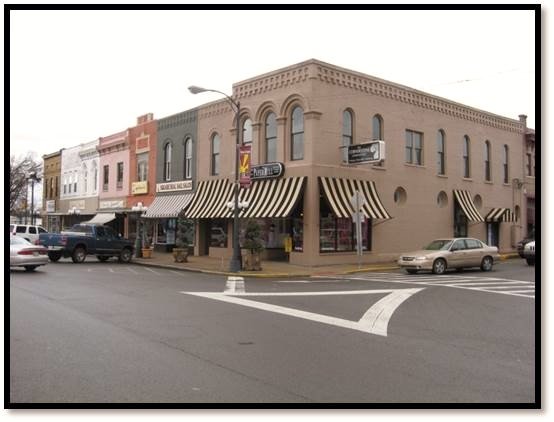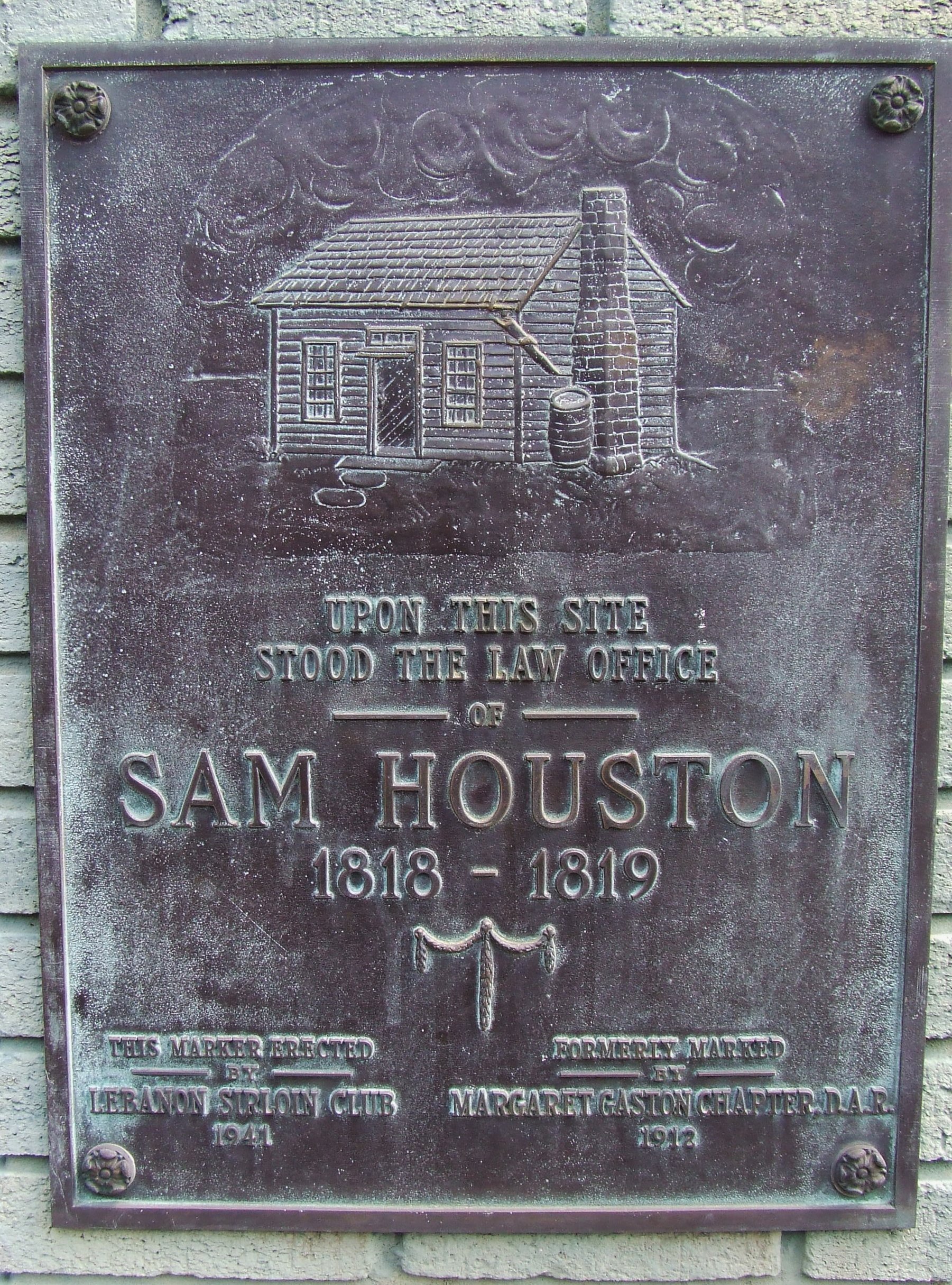
Lebanon Commercial Historic District
Address: Public Square, Lebanon, TN 37087
1) LEBANON COMMERCIAL HISTORIC DISTRICT
Public Square
Lebanon, the county seat, is known for its historic Public Square, formed in 1802 over the Town Spring.
Since its founding, Lebanon’s Public Square has been a center of commerce and community for Wilson County and the city of Lebanon. The Square has been shaped by several fires which destroyed whole blocks of the original buildings. Most of the structures today date from the late 1880s to the 1930s.
Lebanon’s Square has hosted speeches and political events staged by luminaries such as William Jennings Bryan, Frank G. Clement and Sam Houston. It’s been the site of military exercises with General Patton and his Second Armored Division during the WWII maneuvers headquartered at Cumberland University. First Monday Mule Day sales were a monthly event on the Square until 1939. Four county courthouses have called the Square home including the third version designed in 1848 by William Strickland, architect of the Tennessee State Capitol building.
And perhaps, most importantly, from the days of its earliest stores and “ordinarys”, the Square has been the home of numerous businesses. In 1803, a quarter century before being elected President, Andrew Jackson owned a store on the Public Square. Lebanon’s Square was placed on the National Register of Historic Places as a Historic Commercial District in 1999. In the fall of 2013 Lebanon was accepted into the Tennessee Main Street program.
General Hatton Statue
A monument to General Robert Hatton was placed in the center of the Public Square May 20, 1912. Hatton was a graduate of Cumberland University, a lawyer, a State and U. S. Representative from Wilson County and first colonel of the 7th Tennessee Infantry Regiment. In 1862, seven days after being promoted to Brigadier General, he was killed at the Battle of Seven Pines in Richmond, Virginia. His remains would eventually return to Lebanon and are interned at Cedar Grove Cemetery. A believer of a unified nation, Hatton gave an impassioned speech at the Lebanon courthouse, April 1, 1861, on the efforts of compromise and a moderate course of action. Later that night a crowd gathered on the lawn of Hatton’s home on West Main Street, “beating tin pans and whooping savagely,” disapproving of his earlier speech. Afterwards, a figure of Hatton was burned in effigy. After President Lincoln’s call for volunteers to fight against the southern states, Hatton sided with Tennessee in its vote for secession and formed a Confederate military unit, the Lebanon Blues.
Site of former Law
Office of Sam Houston
At 107 East Main Street a plaque now honors the site of the law office of Sam Houston, Governor of Tennessee and hero of Texas. Houston began his law career in Lebanon in 1818 and continued to practice here until elected as Attorney General of the Mero District in 1819. The office was located in a small cabin on East Main Street which he rented from Isaac Golladay, the town’s postmaster. In 1827 Houston was elected Governor of Tennessee, but resigned the office in 1829. By 1832, he entered Texas and helped lead the movement for independence, being elected President of the Republic of Texas in 1836. When one of Golloday’s sons became ill in Huntsville, Texas in 1852, Houston came to his bedside and greeted the young man, “if you are the son of Isaac Golladay, I recognize you a child of an early and true friend,” proof of Houston’s lifelong affection for the friendships formed in Lebanon. The log building stood until 1932 when the present buildings were constructed.
The Arcade
Lebanon’s Arcade at 142 Public Square is only one of three known in the state. Arcades were the “malls” of the early twentieth century. Constructed in 1909, the Arcade was planned to stretch between the Square and Gay Street with at least five stores fronting west on an arcade extending north and south from the corner of the square. Doctor’s offices, retail stores and civic clubs used the space. The building had an original skylight roof that was destroyed by a strong straight- line wind. This was replaced by smaller skylights which are still in use today.
Neddy Jacobs Replica Cabin
In the Northwest corner of the Square, this replica cabin, built in 2002, depicts the home of Neddy Jacobs in 1800. The Jacobs cabin’s original location was to the northwest of the Big Spring, later known as the Town Spring. This spring would provide water to Lebanon for over 100 years. In the early years, citizens would descend stone steps into the spring to retrieve their water. In 1887 pipe was laid to carry the water to homes and businesses. The spring was abandoned in 1932 and the city went to the Cumberland River for its water source. Listen and you can still hear the spring running as strong as ever under our Public Square.
The Capitol Theatre
At 110 West Main Street: Premiering December 9, 1949, under the management of local businessman John Hatcher, Sr., the Capitol Theatre was the last great movie house in Lebanon. The auditorium could seat one thousand patrons and featured a balcony and “crying room” for fussy infants.
Vacant and neglected for many years, the building was purchased in 2009 by Bob and Pam Black who worked several years to restore the building to its former grandeur. The restored marquee was once again lighting the night by the summer of 2013. Great care was taken to preserve many of the original features of the lobby while updating the auditorium with excellent acoustics for concerts and digital movies. The movie poster displays in the lobby and at the main entrance are original to the theatre. In 2014 the Capitol Theatre restoration project received a Certificate of Merit from the Tennessee Historic Commission for Historic Preservation.








